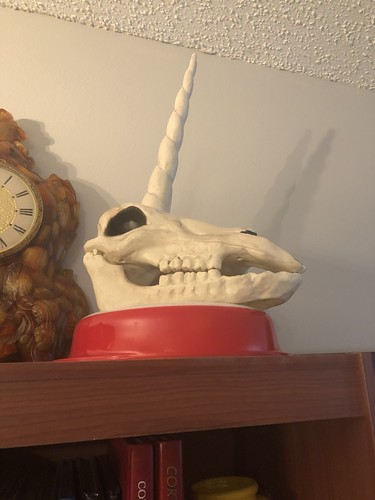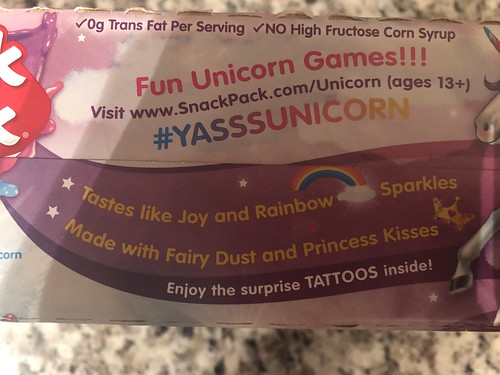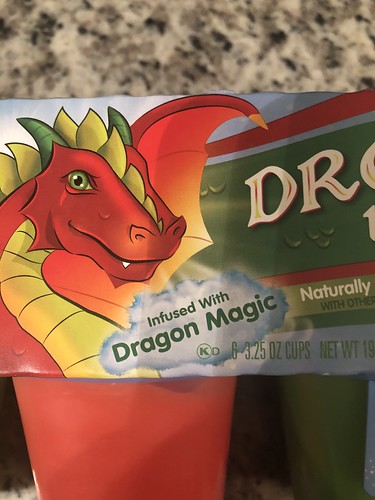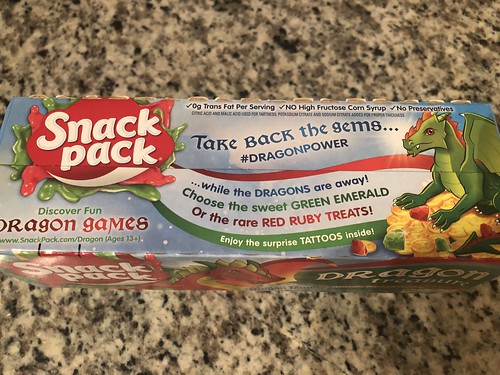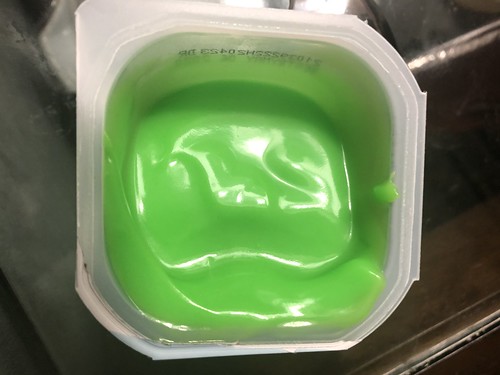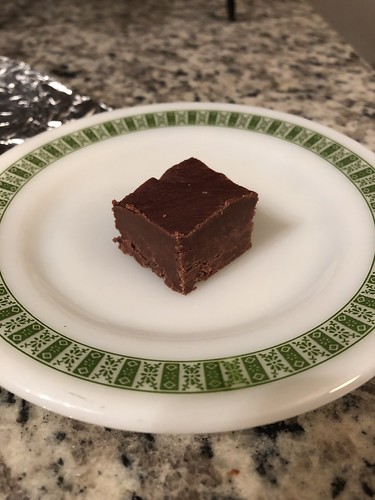I didn't mean to take a year off from blogging. Actually, if we're being accurate, I've taken almost two years off, which, again, I did not mean to. It just kind of happened, and then it kept happening, and I kept swearing I would pick it up again and not getting to it. I don't even have a good excuse, really. I had some health issues, and I moved, and work got busy, and so here we are. I don't know if you can call it a New Year's Resolution, but I'm going to actually get back to blogging, and the best way to start is to do my traditional year end book review.
Which may be a little difficult because I did not keep track of what I was reading this year.
This is weird because I usually keep a list, and last year I kept that
very extensive spreadsheet so that I could track all sorts of data on what I read and who wrote it. This year I didn't keep a list, but every couple months I took pictures of what I'd read because I was totally going to get back to blogging and writing about them. This means that right now, at the beginning of this entry, I have no idea of how many books I finished and I don't have any memory of some of them.
My first photo of books shows up in April. It represents everything I'd read so far this year, and it looks pretty far behind my usual tally. There are only 11 books in it, and at that point in the year there should be about 16.
City Behind a Fence, by Charles Johnson and Charles Jackson, was about the building of Oak Ridge, Tennessee. I've read other books on the subject, but this one actually went more in depth into what the houses and facilities were actually like, what the stores stocked, how people got assigned to housing, and focused less on the personal stories of the people involved, so it provided some balance to the other things I'd read.
Megan Abbott's
Give Me Your Hand was a story about women in science, past friendships, academia, and murder. I remember this being a very tense, fast read that I enjoyed, but don't really remember anything specific.
Jim Munroe's
Angry Young Spaceman took a pretty typical story of male post-collegiate angst and stuck it at the end of the galaxy on a non-human world. I liked this.
The fun part of Parker Posey's
You're On An Airplane is that, in my memoir, the time I met Parker Posey would be a pretty good story and would take up a page or two, but in her memoir I don't appear at all. A lot of other people do, though, and this is ultimately an entertaining, if light, read.
Even though it's been months, I strongly remember Mary Crockett's
How She Died, How I Lived. A high school loner texts five girls he goes to school with one night, and only one texts back. He meets up with her, and then brutally murders her. This is the story of how the other girls feel afterward, and how it impacted their school, their town, their friends, and the rest of their lives as they slowly approach both high school graduation and the killer's trial. Even though this came from the Young Adult section at Target, it was a very interesting read.
Gwendy's Button Box, by Stephen King and Richard Chizmar, was ok. It only took a day or so to read, and honestly wasn't that interesting. I don't know Chizmar's work, but I know King has done better.
Carol Goodman, who usually just writes murder mysteries involving secret babies, added supernatural elements to her typical formula with
Incubus. I remember that it was vaguely entertaining, but little else.
My friend Leo wrote something about Ben Dolnick's
The Ghost Notebooks, but I can't remember specifically what it was. She seemed to like the book, though, and I did, too. Short and disturbing, it tells the story of a couple who move to a tiny museum somewhere in New England (maybe upstate New York?) and the wife's sudden disappearance that seems to echo past events at the house.
I really enjoyed Madeline Miller's
Circe, which retells several Greek myths from the perspective of Circe, rather than the heroic Greeks. It ultimately becomes a story of love, loss, motherhood, and revenge, and it was a good read. This is everything Disney wanted "Maleficent" to be, but without selling out Circe to make her more sympathetic or a victim.
Paul Tremblay's
The Cabin at the End of the World tells the disturbing story of a family on vacation. A group of strangers approach their cabin, explaining very reasonably that the world will end if the family doesn't do certain things, but those things involve murder and torture. Are the strangers just a crazed cult, or is what they're saying true? And how does the family survive?
Babe Walker's
White Girl Problems wasn't nearly as funny and satirical as it thought it was.
My next photo of books shows up in August, and only has eight books in it, bringing my total for the year at that point to 19.
I'm not sure how or why I picked up Kieron Connolly's
Abandoned Civilizations, but it gave capsule descriptions of 90 or so ancient civilizations from around the world. It had a lot of pictures, but served as the kind of book that made you want to go look up more about these places in other books.
My friend Kristin sent me
Into the Mist by David Brill, and it told all about deaths, injuries, and disasters in the Great Smoky Mountains National Park. Since I visit the park fairly often, this was an interesting read.
Craig Child's
Atlas of a Lost World was supposed to be about Ice Age America, but turned out to be more about Child's travels to Ice Age archeological sites. It needed way more archeology and way less about Child.
Pete Buttigieg's
Shortest Way Home was the first book I read this year to try to better understand the 500 or so Democratic presidential candidates. It talked about Pete's life and experiences, and was the first step in my long disenchantment with his candidacy.
I picked up Shelly Laurenston's
Hot and Badgered because it had a hot guy on the front and sounded insane. It was a fairly entertaining, but also fairly shallow, love story between were-grizzly bears, were-honey badgers, and the international assassins trying to keep them apart.
Bobby Hall's
Supermarket was derivative of lots of other books and movies, and I don't remember anything else about it except thinking, "Other people have done this better."
Paula Johnson's
Lost Restaurants of Knoxville was an interesting tour of local history.
I read a second Carol Goodman book this year,
The Other Mother. A return to Goodman's more traditional murder mysteries, this one features a typical Goodman secret baby, an isolated location with a mysterious past, and a protagonist who might be the murderer but might also be insane and pretending to be the murder victim. This was a good read even if some of the ending is a little dependent on coincidence more than it should be.
And now we come to a stack of books that are still on an end table in my living room, because they are waiting to be shelved, taken to the used bookstore for credit, and counted. I was holding on to them because I was going to get back to blogging again, and here we are, finding out how close to 52 books we're going to end up getting this year.
#20 - Carla Yanni's
Living on Campus is an architectural history of dorms, residence halls, and fraternity and sorority houses at American colleges and universities. The intended audience for this is probably rather narrow, but if, like me, you work in higher education or have an interest in it this might interest you. I liked it a lot, but there are points when it gets a little dry, as it's more of a textbook than it is popular reading.
#21 - Josh Malerman's
Inspection was a good book. 26 boys lived at a special school in the forest, never leaving campus or knowing the outside world. They were dedicated to their studies, to art, and to being the best boys that boys could be. J wonders what's beyond the forest, and whether their teachers are keeping things from them, and then one shocking day meets something else, someone that's not a boy. This other being, K, is something different, something called a girl, and she lives with 25 other girls at a special school, deep in the forest. I enjoyed this book a lot.
#22 - In
So We Read On, Maureen Corrigan discusses "The Great Gatsby", and how it came to be an American classic. This is not another Fitzgerald biography, but is instead a biography of the book itself, explaining how it went from critical and commercial failure to being taught in high schools and colleges and becoming the beloved novel that it is today. This was a very good read about my historical literary boyfriend, F. Scott Fitzgerald.
#23 - The previous book mentioned noted jerk Ernest Hemingway discussing F. Scott in
A Moveable Feast so I read that, too, confirming that noted jerk Ernest Hemingway is, indeed, a jerk. I'd say I want to punch him in the face, but he'd probably just write another one of his terrible novels about that, too, the jerk.
#24 - I count Tom King's
The Vision as one of the best comic books of the decade, so I finally got around to reading his novel,
A Once Crowded Sky, and it confirmed the sad truth: Tom King shouldn't be writing comic books. Tom King sees no joy in being a superhero, no wonder. He sees only sacrifice, and cost, and trauma, and pain, and everything he's written since "The Vision" confirms that, as does this book. Tom King only has one superhero story to tell, and it's not fun.
#25 - Remember when I said Stephen King was capable of better than "Gwendy's Button Box"?
The Institute is one of his best novels in years. A science fiction story of geniuses, psychics, killers, and conspiracy, this was difficult to put down, even when parts of it break your heart.
#26 - Austin Grossman's
Crooked tells the story of Richard Nixon, America's last sorcerer-president, and his secret war to keep the US safe from eldritch forces and supernatural powers. I enjoyed this a lot.
#27 - Peter Clines'
Ex isle was the fifth book in his series about superheroes living through a zombie apocalypse. If you like the others, you'll like this one, but these are definitely not stand-alone books where you can pick up any of them and get a full story.
#28 -
Flight or Fright was a collection of horror stories related to flying by various authors. Some were good, some were bad.
#29 - Jennifer Pozner's
Reality Bites Back tried very hard to convince me that reality television is bad for women, families, and society in general. She makes strong arguments, and is probably actually right, but I love my garbage TV too much to give it up.
#30 - Bill Bryson's
One Summer is a wild US history lesson about the summer of 1927, when Babe Ruth is in a home run derby, Charles Lindbergh is crossing the Atlantic, we're about to fall into the Great Depression, and the United States is never the same. This was a very entertaining, educational read.
#31 - Sarah Waters'
The Little Stranger, a moody British ghost story, is a little long and ultimately unsatisfying.
At 31 books for the year (which I did not know at the time), I left to go visit my family in December, and read a bunch of books while I was home. Was it enough to get to 52?
#32 - Erik Asphaug's
When the Earth Had Two Moons was a pretty entertaining book about solar system and planetary formation, and whether our system should be considered unusual or common among the millions and billions of other solar systems in the universe.
#33 - Back in the 1990's, before current college first year students were born, Kris Pulaski was the lead guitarist of a metal band just about to make it big. Instead, their lead singer went solo, buried their breakout album, and went on to global stardom while the rest of the band ended up in their personal versions of hell. In Grady Hendrix's
We Sold Our Souls, Kris finds out what really happened: Terry did way more than just breaking up the band, and now Kris has to find him to save herself from eternal damnation. I really like Hendrix's writing, and this does not disappoint.
#34 - Gregory Maguire's
Hiddensee tells a holiday story of a nutcracker, a rat, a princess, and a very complicated series of families. It's better than some of Maguire's books, but not as good as others.
#35 - Kamala Harris's
The Truths We Hold makes me wish her presidential campaign was still running. I really hope she ends up as someone's vice president or attorney general pick.
#36 - Jared Diamond's
The Third Chimpanzee, about the evolution of human beings, was interesting but, at times, also a little dry and boring.
#37 - Andrew Shaffer's
Hope Never Dies, a murder mystery starring a rambling, annoyed Joe Biden who sits at home resenting that Barack Obama never calls, is pretty much exactly how I imagine Joe Biden behaves.
#38 - Rainbow Rowell's
Carry On was a kind of Harry Potter homage, but with actual gay people and no slaves. I liked it.
#39 - As a collector of vintage Pyrex, I was intrigued by Sarah Archer's
The Midcentury Kitchen, which talks about the growth of kitchen and appliance design and the changing roles of women in society in midcentury America. There are a lot of pictures, and sometimes not as much substance as I would have liked, but overall it was a good read.
#40 - Dan Savage's
American Savage is a series of essays on marriage, love, sex, and the state of the US with regard to LGBTQ+ people. It was a good read, but being a few years old is also somewhat outdated.
It's also the last book I finished in 2019, which means I did not make my goal of 52 books, and actually came in as low as I have since I started counting this. Maybe in addition to getting back to blogging I can get back to reading more.
